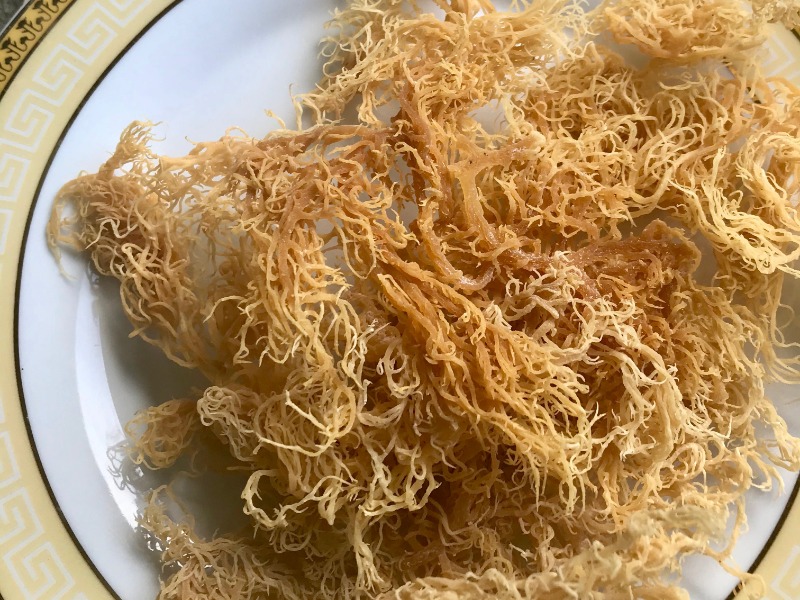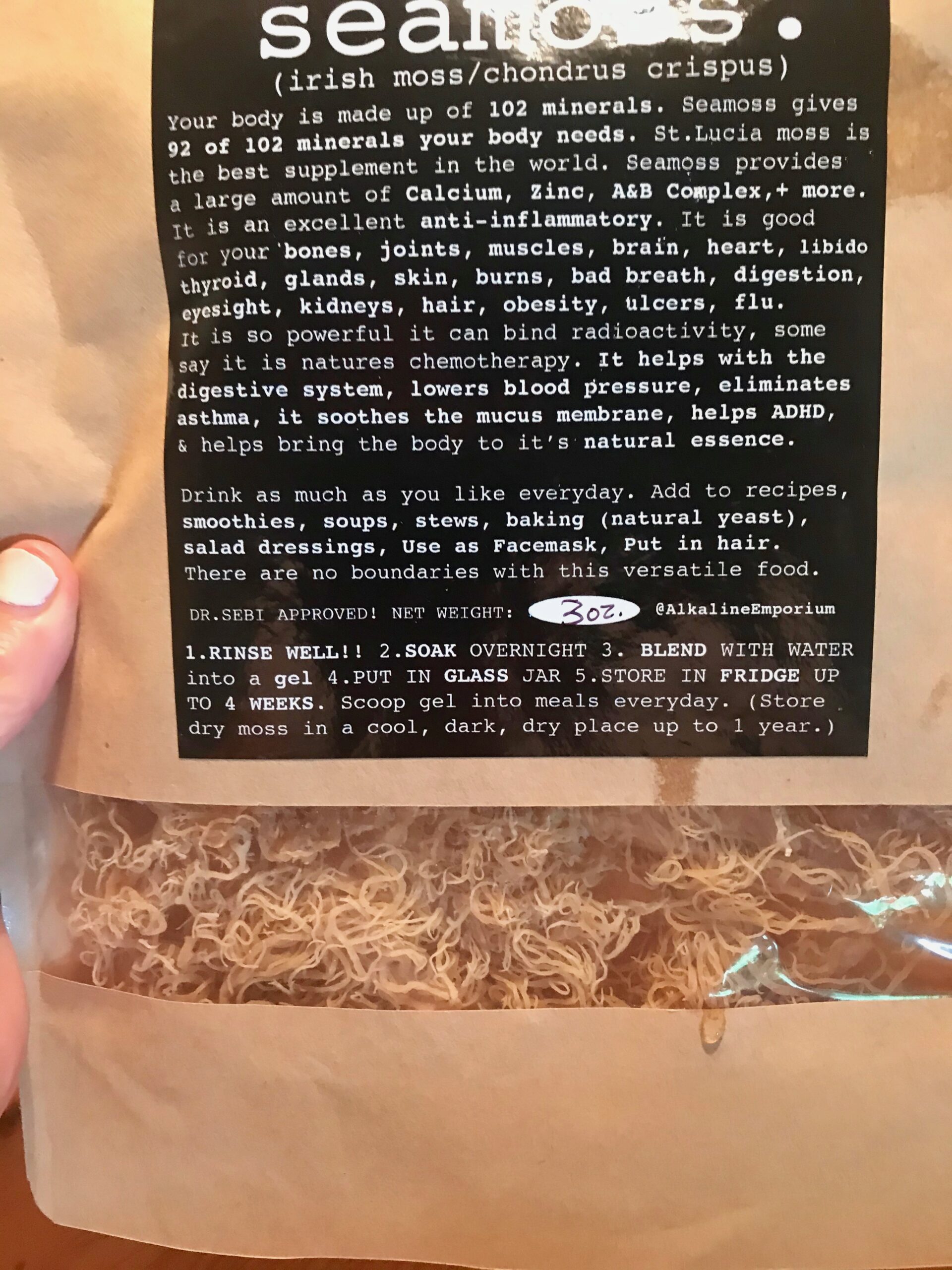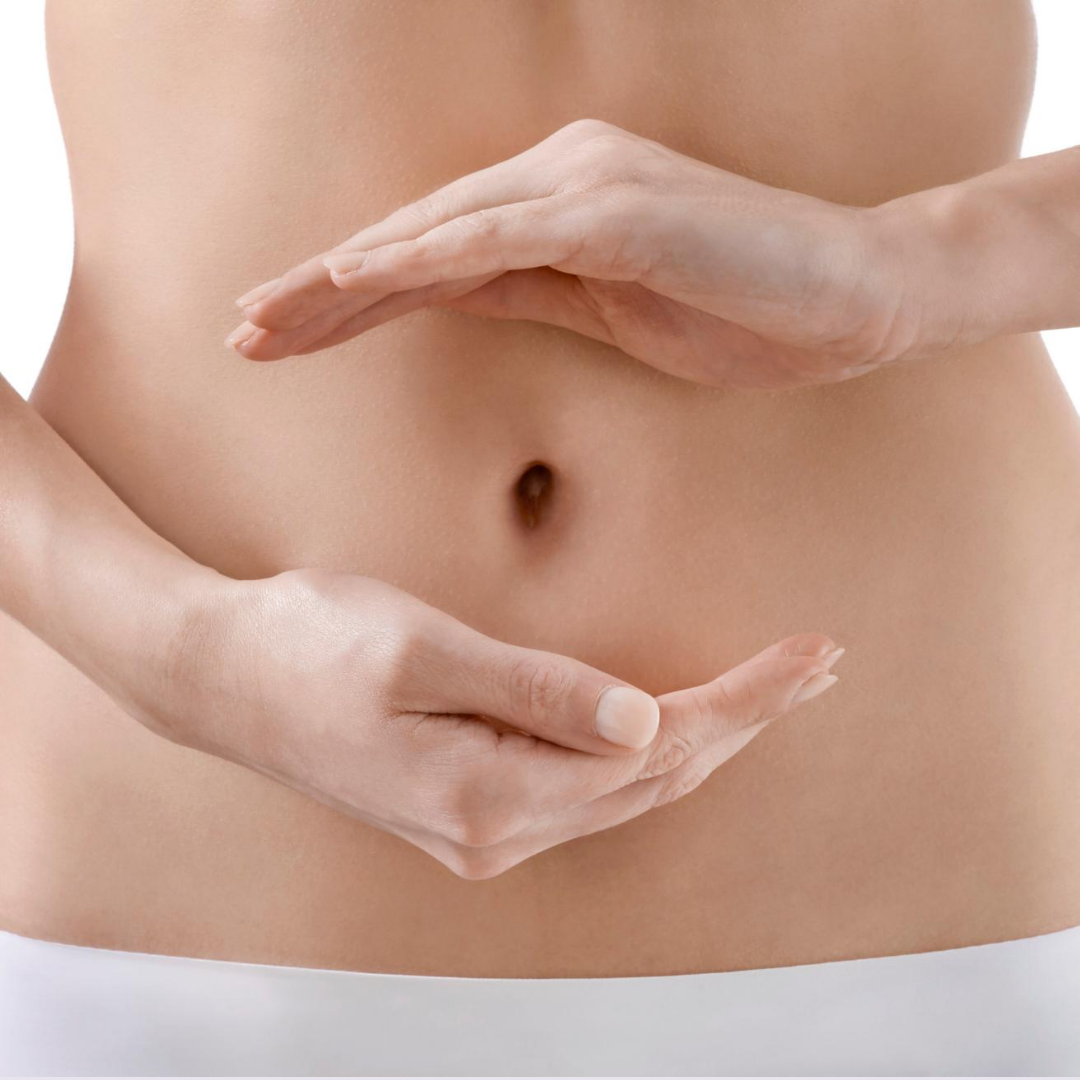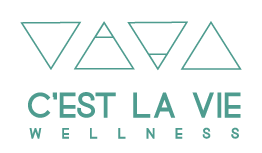Sea Moss: A Superfood?

By Lyne Desforges, Holistic Nutritionist & Culinary Expert
Sea Moss: A Superfood?
I love experimenting in the kitchen and trying out new foods. After reading about how sea moss is a great thickener for homemade nut milk, I decided to order some and give it a try. I also wanted to see if all the hype about the health benefits were true.
What is it?
Sea moss is actually not a moss but an algae. It is also known as Irish moss, red algae, carrageen, or under its latin name Chondrus Crispus. It is a sea vegetable that is used in many parts of the world as a thickening agent for non-dairy milks, soups, smoothies, stews, and even skin and hair products. (5)
Sourcing it
Sea moss is found in abundance in the Carribean, as well as the North Atlantic Ocean area. Finding a clean source is important as many can contain toxic minerals such as mercury. St. Lucia seems the be one of the cleanest sources and that’s where mine came from. (1)
Is it healthy?
Like most sea vegetables, sea moss is rich in various minerals (calcium, zinc, selenium, potassium, etc.), A&B vitamins, iodine and antioxidants. According to the packaging label on my sea moss, it has incredible health benefits that cover pretty much every major system in the body (see photo).
Studies on the health benefits of sea moss are very limited so these claims may stem from general observations, correlations, and traditional uses over many centuries. The studies that have been done on algae were in vitro or on lab animals and they show some some evidence of the beneficial effects of sea vegetables and their components. (4)
Thyroid Health
There are two main thyroid hormones that are produced naturally in our body: tri-iodothyronine (T3) and thyroxin (T4), both of which are also found in abundance in the sea moss. Therefore, sea moss and sea vegetables are often used as a treatment for thyroid disorders. (10, 12) Because sea vegetables also contain good amounts of iodine and selenium, they help with the metabolism of thyroid hormones. Since the thyroid regulates all metabolic activities in the body, it is important to keep it healthy.
Natural Detoxifier & Cancer Fighter
Sea moss contains algin, a compound that could have a detoxifying effect because it may decrease the amount of certain heavy chemicals in the body. (2)
Another interesting study compared the effectiveness of tamoxifen (a breast cancer drug) versus an edible red algae extract in rat animals. Their findings were impressive, showing that the algae was 27% more effective than the conventional drug. There is definitely more research needed in this area but the early findings are very promising. (9, 11)
Digestive Health
 As soon as you start working with sea moss (soaking it, heating it gently), you notice its mucilaginous texture (slimy texture). This means that ingesting it will have a very healing and soothing effect for any internal mucous membrane such as the whole digestive tract and external membrane such as skin and hair. (10, 13)
As soon as you start working with sea moss (soaking it, heating it gently), you notice its mucilaginous texture (slimy texture). This means that ingesting it will have a very healing and soothing effect for any internal mucous membrane such as the whole digestive tract and external membrane such as skin and hair. (10, 13)
It also provides great prebiotic fibre to the gut, helping to nourish the good bacteria so that we can maintain good gut health and balance. (8)
Nourishment for the skin
Sea moss contains citrulline-arginine, amino acids that are important sources of nitrogen and are essential for protein and collagen synthesis. It can help protect the skin against harsh environments, and prevent and improve skin aging. (5)
Respiratory and Immune Health
Because it is so soothing and nourishing for all mucous membranes, sea moss has been used traditionally to relieve, treat or prevent any respiratory ailments such as coughs, colds, congestion, bronchitis, sore throats, etc. (6)
Certain components of sea moss have antiviral and antimicrobial properties that actually enhance the immune response in the body reducing the chances of infections. (7)
Is Carrageenan Bad?
There has been a lot of talk recently about the negative health effects of carrageenan on humans, especially cancer-causing effects. It should be noted that studies have been on lab animals and using degraded carrageenan (the kind often used in processed foods). There were no negative effects observed when using undegraded carrageenan. (3, 13) Carrageenan is one of the components that is found in sea moss. When working with the whole sea moss, I used the whole plant, not just one component. Eating the whole food is always a better option when it comes to nutrients in their most bioavailable form.
The Learning Kitchen
Sea moss is definitely an interesting food with many potential health benefits. It has been used traditionally in so many cultures all over the world to treat and heal various conditions. More research needs to be done but some of the preliminary studies are very promising. For my part, I am happy to learn more about it and add it to various recipes as I continue to experiment and discover new products in my learning kitchen.
References:
- “4oz.16.Oz St. Lucia Seamoss 100% Dried Raw Natural.” Etsy, etsy.com/ca/listing/634248837/4oz-16oz-st-lucia-seamoss-100-dried-raw.
- “Algin: Uses, Side Effects, Interactions, Dosage, and Warning.” WebMD, WebMD, webmd.com/vitamins/ai/ingredientmono-275/algin.
- Ariffin, Shahrul Hisham Zainal, et al. “Cytotoxicity Effect of Degraded and Undegraded Kappa and Iota Carrageenan in Human Intestine and Liver Cell Lines.” BMC Complementary and Alternative Medicine, BioMed Central, 17 Dec. 2014, ncbi.nlm.nih.gov/pmc/articles/PMC4320596/.
- Brown, Emma M, et al. “Seaweed and Human Health.” OUP Academic, Oxford University Press, 1 Mar. 2014, oup.com/nutritionreviews/article/72/3/205/1853561.
- Chondrus Crispus. sciencedirect.com/topics/agricultural-and-biological-sciences/chondrus-crispus.
- “Irish Moss-Chondrus Crispus.” Health Benefits, healthbenefitstimes.com/irish-moss/.
- Liu, Jinghua, et al. “Components of the Cultivated Red Seaweed Chondrus Crispus Enhance the Immune Response of Caenorhabditis Elegans to Pseudomonas Aeruginosa through the Pmk-1, Daf-2/Daf-16, and Skn-1 Pathways.” Applied and Environmental Microbiology, American Society for Microbiology, Dec. 2013, ncbi.nlm.nih.gov/pmc/articles/PMC3837755/.
- Liu, Jinghua, et al. “Prebiotic Effects of Diet Supplemented with the Cultivated Red Seaweed Chondrus Crispus or with Fructo-Oligo-Saccharide on Host Immunity, Colonic Microbiota and Gut Microbial Metabolites.” BMC Complementary and Alternative Medicine, BioMed Central, 14 Aug. 2015, ncbi.nlm.nih.gov/pmc/articles/PMC4535385/.
- “Seaweed Outperforms Chemotherapy for Breast Cancer.” NaturalHealth365, 26 Oct. 2017, naturalhealth365.com/seaweed-breast-cancer-2328.html.
- “Irish Sea Moss: Benefits, Uses and Products: ScienceFlora.” Science Flora, 6 Apr. 2020, scienceflora.org/irish-sea-moss/.
- Shamsabadi FT;Khoddami A;Fard SG;Abdullah R;Othman HH;Mohamed S; “Comparison of Tamoxifen with Edible Seaweed (Eucheuma Cottonii L.) Extract in Suppressing Breast Tumor.” Nutrition and Cancer, U.S. National Library of Medicine, ncbi.nlm.nih.gov/23441613/.
- Teas J;Braverman LE;Kurzer MS;Pino S;Hurley TG;Hebert JR; “Seaweed and Soy: Companion Foods in Asian Cuisine and Their Effects on Thyroid Function in American Women.” Journal of Medicinal Food, U.S. National Library of Medicine, ncbi.nlm.nih.gov/17472472/.
- Telpner, Meghan. “Sea Moss! Where Have You Been All My Life?” Meghan Telpner, 25 Jan. 2019, meghantelpner.com/blog/sea-moss-and-irish-moss-everything-you-need-to-know/.

Educating, motivating and inspiring have always been important aspects of my professional journey. Through workshops, cooking classes, customized menus & recipe books, and online programs, I guide clients towards healthier food choices and eating habits.
